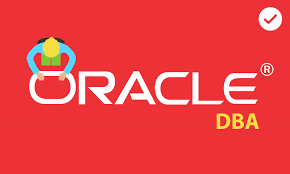 11) Describe the architecture of Oracle Applications?
11) Describe the architecture of Oracle Applications?
• Oracle Applications follow a 3 Tier architecture
– Database Tier
– Middle Tier
– Desktop Tier
• Database tier contains RDBMS database called as oracle database server.
• Database tier stores all the data needed by oracle applications.
• Middle tier or Application Tier containing various servers configured with listeners like web server, forms server, admin server, reports server.
• Database server communicates with middle tier, doesn’t directly communicate with desktop tier.
• Desktop tier contains client desktop where users access oracle applications through web browsers.
12) How do you delete a responsibility from oracle applications?
• Responsibility is a level of authority given to Oracle Applications users.
• It is a collection of requests, forms and menus attached to user.
• Records are used for monitoring and security purpose so we can’t disable responsibilities.
• However, responsibilities can be disabled by assigning an end date to the effective period.
• We can delete a responsibility from both backend and frontend.
13) What are the components of Oracle Applications technology layer?
Oracle Applications technology layer comprises the following products
• Oracle Applications DBA (AD)
• Oracle Applications object library (FND)
• Oracle Common Modules (AK)
• Oracle Applications Utilities (AU)
• Oracle Alert (ALR)
• Oracle Workflow (WF)
• Oracle Applications Framework (FWK)
• Oracle XML Publisher (XML)
14) How many Oracle Homes are there in Oracle Applications and what is the importance of each one of them?
Oracle Applications have three Oracle Homes
• Oracle Home is an environment where oracle products run.
• Database Oracle Home in the database tier that acts as the Oracle Home for the Oracle database.
• Oracle Home in the application tier called as 8.0.6 Oracle Home. It is called the technology stack Oracle Home and used by forms, reports and discoverer.
• IAS Oracle Home, used by the Oracle HTTP Server (Web Listener).
• We can run multiple releases of same products simultaneously by using multiple oracle homes.
15) Can I enable real application clusters in the database tier along with oracle applications?
• Yes, real application clusters can also be configured with Oracle Applications
• RAC allows multiple instances to mount and open a single database.
• RAC requires shared disk storage and a dedicated network interconnect.
• When any one of the node fails, database services can be still available on remaining nodes.
• In that case, more than one instance of Oracle runs and the data file are stored at a central location accessible from the entire instance.
16) Where are Apache log files and configuration files stored and list each of them?
• Apache log files are stored in $IAS_ORACLE_HOME/Apache/Apache/logs.
• The log files are error_log, error_log_pls, access_log and access_log_pls.
• Apache configuration files are stored in $IAS_ORACLE_HOME/Apche/Apache/conf directory.
• The main configuration files are httpd.conf, apps.conf, httpd_pls.conf,oprocmgr.conf, and oracle_apache.conf.
17) How to recreate a DBC file and where is it located?
• Running Autoconfig will recreate the DBC file
• DBC is a database connect descriptor file which stores database connection information used by application tier (web browsers) to connect to database.
• The file is located in FND_SECURE directory.
• you can also create the DBC file by running the script adgendbc.sh
• We can find the above script at $COMMON_TOP/admin/install directory.
18) List out the important configuration files in APPL_TOP?
Important configuration files available in the APPL_TOP are
• APPLSYS.env/APPSORA.env
• Adovars.env
• SID.xml
• Adconfig.txt
• Adjareas.txt
• Topfile.txt
• Appsweb.cfg
• Hostname_SID.dbc
• Adpltfrm.txt
• Adjborg.txt
• Adjborg2.txt
19) Which utility is used for changing the password of the application users and how it runs?
• The password of the application users can be changed using the FNDCPASS utility.
• You must have system and applications password for running FNDCPASS.
• FNDCPASS will run in the following manner:
• FNDCPASS apps/apps 0 Y system/manager SYSTEM APPLSYS WELCOME.
• FNDCPASS apps/apps 0 Y system/manager ORACLE GL GL1
• FNDCPASS apps/apps 0 Y system/manager USER VISION WELCOME.
20) What are the scripts do you use while Apps cloning?
• A type of script that’s made a comeback in hot scripts is clone script.
• adpreclone.pl prepares the source system and adcfgclone.pl configures the target system.
• Both the scripts are located in $COMMON_TOP/admin/scripts/contextname directory.
• Adpreclone.pl collects information about the database.
• It also creates generic templates of files containing source specified hardcore values.